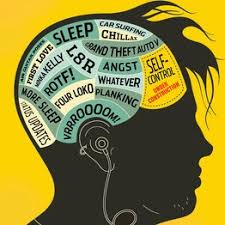The Human goes through many different life cycles. There are more than seven cycles but there are seven stages to go through. The cycles of the human body includes sleeping, breathing, eating, blood flow, being awake, and much more. The seven stages are as follows: Infancy, Toddler, Early Childhood, Late Childhood/School Age, Adolescence (teenager), Young Adult, Adulthood. The picture shown below shows more than seven stages but the school age stages can be combined and Early and middle adulthood can be combined.


Infancy would be during the 0-1 year of life. This is where the child starts to grow really fast and learns to trust people. This is where they also learn to move their body different ways. This stage is the start of the next stage to come which is very important for the developmental growth of a child.
Toddler and Early Childhood go along with each other because this is during the 2-4 years of age. This is a crucial stage for every body. This is where they really start to take in all the emotions and information around their environments. This where the brain is also in a high developing stage where the child will take in anything they hear and try to logically think through everything they do. This is where the child likes to start exploring the world and learn from right and wrong. This stage is when they develop their own personality as well.
Late Childhood/School Age is during the 5-12 years of age. This stage is where the child starts to learn a lot about themselves and sometimes starts puberty towards the later years of this stage. Many different things start to happen to the body during this stage such as facial blemishes, body weight gain or loss, increasing muscle or strength, body hair, and much more. It all depends on how early or late the child's body will develop. This stage is also when the child will learn from the people around them and their own experiences.
Adolescence is during the 13-17 years of life. This is the stage when the body is almost fully developing and the children are becoming to have a mind of their own. Attitudes start showing and rebellious behavior may start occurring. This is when puberty has fully started to happen and sexual tension may start happening. The children also start to become more independent.

Young Adulthood is during the 18-30 years of life. This is the point where the children become adults and start college or begin their own path out into the world. Moving out onto their own and making their own decisions occur in this stage. There may be multiple boyfriends or girlfriends coming into the picture in this stage or even marriage possibly. Some adults are trying to find their reason for being here in this stage and try to fulfill that reason or reach their goals.

Adulthood is the last stage and is during the 31+ years of life. This is when most adults have their lives figured out. They have homes, families, and jobs. They no longer need their parents to support them. Some adults in this stage, depending on the age, don't have their parents anymore because they have passed. This is where the adults have figured out their hobbies and finding ways to live life day by day. This is also the stage, depending on age, that the adults start to accept death and know that they will be in good hands.
Each stage can go much more into depth but this is keeping it simple. Every stage and cycle in the human life is very crucial for development. We all need to pass one stage before we can move onto the next. Without stages, we would be a mess. Nobody would know who they are and we wouldn't have the education we get when we first start out into the world.
Please come back! My next post will be about animal and insect life cycles and how they work!
References
Braverman, Jody. 2013. The Human Life Cycle Stages. Retrieved from http://www.livestrong.com/article/79177-human-life-cycle-stages/
Spiritual Growth Keys. 2012. Cycles of Life. Retrieved from http://www.spiritualgrowthkeys.com/cycles-of-life.html



